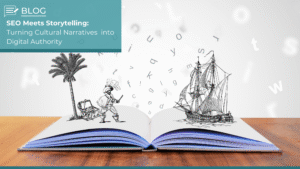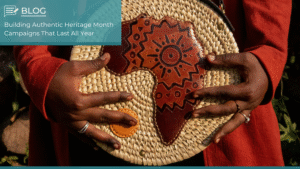How heritage institutions can leverage their greatest asset, trust, to build sustainable competitive advantage in an attention-driven economy
In an era where brand loyalty spans mere months and consumer attention shifts by the minute, brand stewardship for legacy brands has never been more vital. Yet many heritage institutions struggle to translate their rich history into contemporary relevance. The solution isn’t abandoning tradition, it’s mastering the art of brand stewardship.
The Hidden Marketing Advantage of Legacy Brands
While digital-native brands chase viral moments and growth hacks, established institutions often overlook their most powerful marketing asset: accumulated trust. This isn’t just brand equity, it’s generational credibility that can’t be bought, only earned through decades of consistent delivery.
Consider this: in our hyperconnected world, authenticity has become the ultimate differentiator. Legacy brands don’t need to manufacture authenticity; they embody it. The challenge lies in activating this advantage strategically.
Brand stewardship transcends traditional marketing functions. It’s the strategic discipline of preserving, evolving, and leveraging brand equity across time and touchpoints. For heritage institutions, this means prioritising cultural alignment over campaign optimisation. While performance marketing focuses on conversion rates, brand stewardship for legacy brands prioritises cultural coherence. Every interaction from digital touchpoints to physical spaces must reinforce the brand’s core promise.
“The brands that truly endure understand that stewardship isn’t a marketing function, it’s a cultural philosophy,” explains Delarey van Dyk, Managing Director of Republic Digital Consultancy. “After working with heritage institutions for over a decade, I’ve observed that the most successful legacy brands treat every interaction as an opportunity to reinforce their core promise. It’s not about perfection, it’s about consistency of character.”
As van Dyk notes, this approach requires a fundamental shift in how organisations think about brand management. The most effective marketing for heritage brands often comes from within. When staff, stakeholders, and stakeholders become passionate ambassadors, organic word-of-mouth marketing follows naturally. This internal brand advocacy creates an exponential external impact that no paid campaign can replicate.
Why Brand Stewardship Matters More Than Ever
Recent research reveals that heritage brands with strong stewardship practices outperform their peers across key metrics. Customer retention rates are 67% higher than brands without systematic stewardship. These brands command an average 31% price premium tolerance and demonstrate 3x faster reputation recovery following negative events. Perhaps most importantly, they’re 45% more likely to be recommended unprompted, creating that coveted organic growth engine.
The reality is stark: your brand promise is only as strong as its weakest touchpoint. Legacy brands are judged not by their grand gestures but by countless small interactions. From email signatures to bathroom amenities, every detail contributes to brand perception. Whilst competitors focus on major campaigns, brands that perfect these micro-moments create unshakeable emotional connections.
Many legacy brands treat their history as museum pieces rather than living assets. The opportunity lies in transforming heritage into contemporary relevance through strategic storytelling and experience design. This means developing content strategies that connect historical moments to current values and creating immersive experiences that let audiences feel the brand’s evolution rather than just learn about it.
The Five Pillars of Strategic Brand Stewardship
Effective brand stewardship rests on five interconnected pillars that transform how heritage institutions approach marketing and operations. The first pillar is heritage activation, which goes beyond preservation to make history relevant today. This requires systematic thinking about how every moment connects to build a cohesive narrative, mapping the entire customer journey and ensuring each touchpoint honours the brand’s heritage while meeting contemporary expectations.
Operational brand consistency forms the second pillar. This means implementing brand consistency protocols across all operational areas, from customer service scripts to facility maintenance standards. Consistent brand experiences increase customer lifetime value by up to 23% and reduce acquisition costs through improved word-of-mouth marketing.
The third pillar focuses on excellence in micro-moments. This involves auditing every customer touchpoint for brand alignment and understanding that legacy brands create competitive advantage through attention to details that others overlook. When done correctly, this creates a magnetic pull rather than pushing for attention.
Strategic renewal rhythms constitute the fourth pillar, balancing tradition with evolution. This means establishing regular review cycles for brand expression, ensuring relevance without compromising authenticity. The process includes quarterly brand audits, annual strategy reviews, and continuous stakeholder feedback loops. Building renewal into your brand’s DNA prevents it from becoming crisis management.
The fifth pillar is cultivating a pride-driven quality culture. Institutional pride becomes the ultimate quality control mechanism. This requires investing in internal brand education, celebrating brand moments, and ensuring every team member understands their role in the brand story. Proud teams create exceptional experiences, which generate positive word-of-mouth, reducing marketing costs while increasing effectiveness.
The Strategic Implementation Journey
Implementing effective brand stewardship begins with brand archaeology, conducting a comprehensive audit of your brand’s current state versus its intended promise. This means documenting gaps between perception and reality across all touchpoints and understanding where the brand story has drifted from its original essence.
The next phase focuses on stakeholder alignment, ensuring internal teams understand and embrace the brand’s core values. This isn’t just training but a cultural transformation that affects how decisions are made daily. Following this, experience optimisation systematically addresses consistency gaps, starting with high-impact, low-cost improvements that create immediate positive change.
The final phase establishes strategic renewal systems that become part of the operational culture. These ongoing processes ensure the brand continues evolving appropriately while maintaining its essential character. This approach requires patience, consistency, and sometimes difficult cultural conversations, but for heritage institutions willing to invest in proper stewardship, the rewards extend far beyond improved marketing metrics.
The Consultant’s Role in Brand Illumination
Working with heritage institutions requires a different consultancy approach than typical brand projects. Rather than imposing external frameworks, effective brand stewardship begins with deep listening and cultural understanding. The most successful brand transformations start with a simple question: what made this brand special in the first place? The answer usually reveals timeless principles that, when properly activated, create contemporary relevance without sacrificing authenticity.
Our role as consultants is never to impose but to illuminate. We step in not to rewrite history, but to help institutions reconnect with it. Through strategy, narrative, and brand experience work, we guide legacy brands back to the core of who they are and how they can remain relevant without ever compromising their soul. We don’t seek quick wins but look for cultural shifts and sustainable, elegant, purpose-led improvements that future generations can inherit with pride.
Beyond Marketing: Brand Stewardship as Business Philosophy
The most successful legacy brands understand that stewardship isn’t a marketing tactic but a business philosophy. When brand values guide operational decisions, strategic planning, and daily interactions, the result is a sustainable competitive advantage that can’t be replicated.
This creates what we call the quiet revolution: brands that understand their true value and express it with unwavering consistency, day after day, touchpoint by touchpoint. In our attention-economy world, there’s profound power in brands that don’t need to shout. Heritage institutions that master brand stewardship for legacy brands build communities, not just customer bases. They cultivate advocates, not just buyers.
Not every brand needs to shout. Some, like the great institutions of our time, simply need to remember. Remember who they are, what they stand for, and what they owe to those who still believe. Stewardship is not glamorous. It is patient. It requires humility, clarity, and care. But it is also one of the most noble acts in business.
Your Legacy, Your Responsibility
If you’re stewarding a heritage brand, remember that your greatest marketing asset isn’t your budget, your technology, or even your history. It’s the trust you’ve accumulated and your commitment to honouring it. Every decision is a stewardship decision. Every interaction is a brand moment. Every day is an opportunity to strengthen or weaken the legacy you’ve inherited.
The question isn’t whether your brand will evolve but whether you’ll guide that evolution with intention, strategy, and deep respect for what came before. Your greatest asset is not your logo, your mailing list, or even your premises. It is the trust you’ve built across time. Guard it. Honour it. Curate it with love.
Because legacy, in the end, is not what you leave behind. It is what you uphold every single day. The brands that endure aren’t those that chase every trend or shout the loudest. They’re the ones that remember who they are, honour what they represent, and serve that purpose with quiet excellence.
Delarey van Dyk is the Managing Director of Republic Digital Consultancy, specialising in brand stewardship for heritage institutions. With over a decade of experience in legacy brand transformation, Delarey has guided private clubs, family businesses, and cultural institutions through strategic renewal whilst preserving their essential character. Republic Digital Consultancy serves clients across the private, heritage, and philanthropic sectors, bringing timeless strategy to brands with stories worth preserving.









